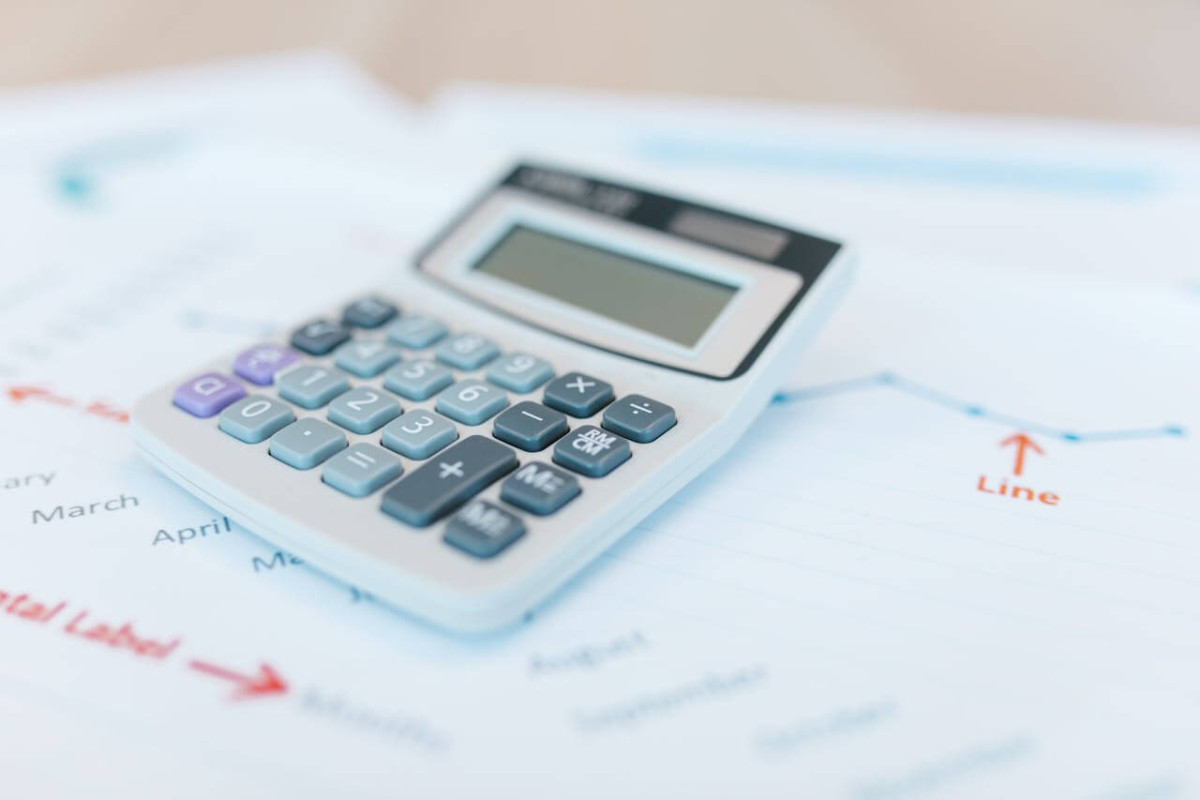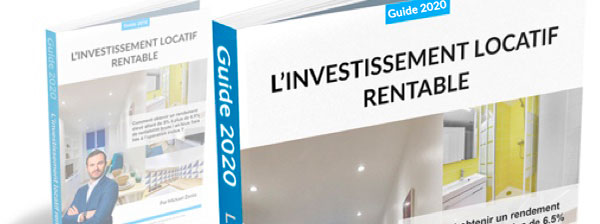Calculating real estate depreciation: complete guide

Real estate depreciation allows the acquisition cost of a property to be spread over its useful life, to compensate for its depreciation over time. This method is essential in the management of investors' assets, particularly with regard to the taxation of rental income. It allows operating expenses to be deducted, thus reducing taxable profit and, consequently, the overall tax burden.
Calculating depreciation is necessary in the context of non-professional furnished rental (LMNP). Here, investors can depreciate between 80% and 90% of the value of their property, excluding land, over a period of up to 30 years. This system makes it possible to optimize the profitability of an investment while limiting the impact of tax on rental income.
Owners will thus be able to generate additional cash while preserving the value of their assets.
What is real estate depreciation?
The principle of real estate depreciation consists of spreading the cost of acquiring a property over several years, depending on its duration of use. However, not all properties are depreciable. This is the case for land, which cannot deteriorate over time, unlike housing. A home must be maintained and renovated regularly to be attractive and up to standard for tenants and occupants.
It thus loses value every year. It should be noted, however, that only natural damage is considered. If the damage is caused by the tenants, it will not be depreciable. On the other hand, the security deposit will be used to cover the repairs.
Thus, instead of recording the purchase price of the property in one go, depreciation allows its value to be gradually deducted. This method is particularly used in real estate asset management to adjust the accounting results of companies or investors.
Distribution of acquisition cost over the period of use
A property is typically used for several decades. To better represent this economic reality, depreciation spreads the cost of the property over a defined period of time, often based on the components of the property.
For example, structural work can be depreciated over 50 years, while technical equipment or interior fittings can be depreciated over a shorter period, between 10 and 30 years, depending on their type and expected wear and tear.
This avoids charging the entire purchase cost to the first year's balance sheet, which could distort financial results and tax forecasts.
Difference between accounting depreciation and tax depreciation
Real estate depreciation can be considered from two angles: accounting and tax.
-
Accounting depreciation is used by companies to reflect the depreciation of an asset in their annual accounts. It is a purely technical operation that has no direct impact on taxes, but which allows to represent the economic consumption of assets over time.
-
Tax depreciation : This type of depreciation directly concerns the tax and allows you to deduct part of the cost of the property from your taxable income. In the context of a rental investment, for example, this involves reducing taxable profits by taking into account the depreciation of the property. This is particularly advantageous for investors, because their taxable base can decrease without generating a cash outflow.
Why depreciate real estate?
Depreciating an asset consists of spreading its acquisition cost over its lifespan, which allows you to deduct a portion of its value each year from the income it has generated. This mechanism is particularly advantageous in the context of rental investment, in particular to reduce taxation on rental income.
Tax benefits of depreciation: reduction of taxation on rental income
Real estate depreciation allows taxable profits to be reduced without involving a cash outflow for the investor. This is particularly interesting in the context of non-professional furnished rentals (LMNP), in which investors can deduct the depreciation of the value of the real estate (excluding land) from their income.
For example, an investor who receives rents of €10,000 per year could depreciate part of the property to the tune of €7,000, thus reducing his taxable income to only €3,000. This system can delay taxation or, in some cases, cancel it completely for several years.
Differences between depreciation in unfurnished and furnished rentals
The use of depreciation differs depending on the type of rental: unfurnished or furnished. In unfurnished rental, it is not possible to deduct the depreciation of the property under the actual regime. The income generated is taxed in the category of property income, and the deductible expenses are limited to loan interest, works and property taxes. This severely limits the ability of investors to reduce their tax base and therefore optimize their taxation.
On the other hand, in furnished rentals , depreciation is a major advantage. Investors can, under the simplified real regime, deduct a portion of the value of the property each year, in addition to other expenses such as loan interest, management fees, or work. This often makes it possible to completely erase taxable rental income for several years, making this type of rental particularly attractive for investors looking for tax optimization.
Methods for calculating real estate depreciation
Real estate depreciation can be calculated in a number of ways, the most common being the straight-line method and the component method. Each of these methods offers a distinct approach to spreading the cost of acquiring a property over its useful life, with varying tax and accounting implications.
The linear method
This method can be interpreted as a gradual decrease in the original value. The calculation will be based on the total amount of the rental property. Depreciation is said to be linear because every year, the same amount is subtracted from the initial cost. To know if a rental property is well depreciated, its value over the years returns to 0.
The component method
When a rental property has been built following various works, it will be a question of depreciation by components. Not all of these achievements are immune to wear and tear.
We will therefore take into account the structural work, the exterior facades, the waterproofing, the roof of the accommodation. It should be noted, however, that the different elements of the construction do not have the same longevity, the same function or the same ratio. The latter, which is also called the share, is the percentage represented by the component in relation to the whole.
It already seems obvious that the structural work takes up almost 50% of the property . This is why the depreciation will be done by components.
|
Components |
Valuation percentage |
Estimated usage time |
|
Roofing |
10 % |
25 years old |
|
Electrical installation |
5 % |
25 years old |
|
Sealing system |
5 % |
15 years old |
|
Elevator |
2 % |
15 years old |
|
Interior design |
8 % |
15 years old |
|
Main structure |
70 % |
80 years old |
|
Total building |
100 % |
Average duration: 40 years |
Depreciation of furniture
If it is a furnished accommodation intended for rental, the depreciation of the furniture will reduce taxes. As for the depreciation period, it is between 5 and 10 years.
Depreciation periods according to the type of asset
Depreciation of a property allows its acquisition cost to be spread over a specific period depending on the nature of the property. This period varies depending on the type of asset being depreciated, whether buildings, furniture or equipment. French tax regulations, detailed on the official website of the tax administration (impots.gouv.fr), provide guidelines for defining depreciation periods according to the type of property. Understanding these periods is essential to optimizing tax deductions related to depreciation, particularly in the context of rental investments.
Main and rental residences: between 20 and 40 years
Buildings, whether primary or rental residences, are depreciated over a long period of time, typically between 20 and 40 years. The exact duration depends on several factors, such as:
-
construction quality
-
the condition of the property at the time of acquisition.
For example, an old building that requires major renovations can be depreciated over a shorter period (around 20 years). A new property or one in excellent condition will often be depreciated over 30 to 40 years.
Furniture and equipment: between 5 and 10 years
Furniture and equipment integrated into a property are generally depreciated over shorter periods, between 5 and 10 years, due to their faster obsolescence. For example, household appliances, kitchen furniture or technical installations such as heating systems are depreciated more quickly than the buildings themselves. This approach allows investors to renew their equipment without incurring excessive tax burdens.
Under the LMNP (Non-Professional Furnished Rental) scheme, the furniture provided in the rented property can be depreciated, which constitutes a significant tax advantage.
For example, a set of furniture for an apartment, purchased for €10,000, could be depreciated over 5 years, with an annual deduction of €2,000 on taxable rental income.
Renovation work: depending on the nature of the work
In the case of renovation work, the depreciation period varies depending on the nature of the work carried out.
-
Light renovations , such as painting or replacing flooring, are typically amortized over 10 to 15 years.
-
Major renovations , such as roof repairs, electrical upgrades or complete modernization of a plumbing system, can be amortized over longer periods, around 20 to 30 years.
These works, which often involve high initial costs, not only allow you to improve the quality of the property but also to benefit from a tax deduction via depreciation.
For example, renovation work worth €50,000, depreciated over 20 years, would allow an annual deduction of €2,500 from rental income.
Percentage of assets depreciated by type
According to an INSEE study on rental investment, approximately 70% of furnished rental properties are depreciated under the LMNP regime. These properties benefit greatly from the possibility of depreciating not only the value of the building, but also the furniture and equipment, which makes them a popular choice among investors seeking maximum profitability.
As for traditional rental residences, subject to depreciation, they represent a smaller proportion of the real estate stock. Around 30% of investors opt for depreciation within the framework of a SCI with IS. For these properties, depreciation focuses on the buildings, but can also include improvement work carried out to maintain or increase the rental value.
Depreciation is common in large cities. Tax pressure is higher there and investors seek to offset high acquisition costs with optimized tax deductions.
In Paris, for example, depreciation is used for more than 60% of furnished properties.
Tax regimes eligible for real estate depreciation
Different tax regimes allow you to benefit from depreciation, notably the LMNP regime (Non-Professional Furnished Rental), the SCI at IS (Civil Real Estate Company at Corporate Tax) and the BIC regime (Industrial and Commercial Profits).
LMNP (Non-Professional Furnished Rental)
The LMNP scheme is intended for individuals who rent furnished accommodation. To benefit from it, several conditions must be met:
-
Annual rental income must not exceed €23,000 or represent more than 50% of the tax household's income.
-
The rented property must be furnished, that is to say it must be equipped in such a way as to allow immediate occupation by the tenant (furniture, household appliances, etc.).
Tax benefits:
The main advantage of LMNP is the possibility of depreciating the real estate as well as the furniture and equipment. This deduction reduces the taxable base, which reduces income tax.
For a property purchased for €150,000, of which €100,000 is for the building and €50,000 for the furniture, the depreciation could be as follows:
-
depreciation of the building: over a period of 30 years, this represents €3,333 per year
-
depreciation of furniture: over a period of 5 years, this represents €10,000 per year.
Thus, the investor could deduct up to €13,333 per year from his rental income, significantly reducing his tax liability.
SCI at IS
The SCI à l'IS is a legal vehicle allowing several people to hold real estate assets . Unlike the SCI à l'IR (Income Tax), the SCI à l'IS is taxed on profits at the corporate tax rate, which is generally more favorable.
Use of depreciation:
In a SCI subject to IS , the depreciation of real estate and equipment can be used to reduce the company's taxable base. This makes it possible to reduce the taxable income, thereby increasing the net profitability of the investment. For example, if the SCI acquires a property for €300,000 and the furniture for €50,000, the depreciation would be:
-
depreciation of the building: over 30 years, i.e. €10,000 per year
-
depreciation of furniture: over 5 years, or €10,000 per year.
Thus, the SCI could deduct €20,000 from its taxable income, optimizing its taxation.
BIC (Industrial and Commercial Profits)
The BIC regime applies to lessors who operate real estate in a commercial context. It is used by professionals who rent furnished properties and who generate income considered as commercial profits.
Terms and calculation:
Under this regime, depreciation is deductible as an operating expense. Real estate can be depreciated in the same way as under the LMNP or the SCI at IS. The calculation of depreciation is similar, based on the acquisition value of the property and the durations provided for by the regulations . Lessors can also deduct other operating costs, such as maintenance and management costs.
Comparison of diets: which is the most advantageous depending on the situation
The choice of tax regime depends mainly on the personal situation of the investor and the nature of the real estate activity:
-
LMNP: ideal for individuals who wish to supplement their income by renting out furnished accommodation. It is relatively simple to manage and allows you to benefit from attractive depreciation without creating a company.
-
SCI à l’IS: advantageous for investors who want to manage assets with several people, with flexibility in the transfer of assets. Depreciation and the possibility of reinvesting profits in the company can generate significant tax savings in the long term.
-
BIC: more suitable for professionals who have a furnished rental activity for commercial purposes. It allows a greater deduction of expenses and better control of income.
Tax impact of real estate depreciation
Understanding the tax impact of depreciation requires examining how it works, how it is calculated, and the implications for income tax returns.
Calculation of tax before and after depreciation on practical cases
To illustrate the tax impact of depreciation, let's look at two practical scenarios:
- Scenario without depreciation:
-
Annual rental income: €20,000
-
Marginal tax rate: 30%
Tax due:
20,000 €×30%=6,000 €
- Scenario with depreciation:
-
Annual rental income: €20,000
-
Deductible depreciation: €5,000
-
Net income after depreciation: €20,000 - €5,000 = €15,000
Tax due:
15,000 €×30%=4,500 €
By including depreciation, the tax due goes from €6,000 to €4,500, which represents a tax saving of €1,500.
Mistakes to avoid when calculating real estate depreciation
Calculating real estate depreciation is a complex exercise that requires careful attention. A wrong assessment can lead to errors in tax returns , which can have significant financial consequences.
- Confusing depreciation and deduction of charges
Depreciation is often confused with expense deductions. It is true that both concepts are linked to the reduction of taxable income, but they do not work in the same way.
-
Depreciation is the distribution of the cost of a property over its useful life.
If an asset costs €300,000 and has a depreciation period of 30 years, the annual depreciation would be €10,000. This allows the taxable base to be gradually reduced.
-
The deduction of expenses involves the expenses actually incurred for the management and maintenance of the property, such as management fees, repairs or insurance. These expenses can be deducted in full at the time they are incurred, unlike depreciation which is spread over time.
Investors must understand this distinction to correctly apply the tax rules and maximize their tax savings.
- Do not take into account works and equipment
Another common mistake is to neglect the impact of renovation work and equipment on the calculation of depreciation. The work carried out on the property can influence the life of the property and, consequently, the amount of depreciation.
-
Renovation work: If significant work is carried out, such as upgrading electrical installations or completely renovating a kitchen, these expenses must be taken into account when recalculating depreciation.
If an investor spends €30,000 on renovations, this can increase the value of the asset and change the depreciation amounts based on this new value.
-
Equipment: Furniture and equipment (such as appliances or furniture) must also be included in the calculation. Depreciation periods for equipment are generally shorter (between 5 and 10 years), but these costs can substantially reduce the taxable base if they are properly included in the depreciation calculation.
Tools to facilitate the calculation of real estate depreciation
Calculating real estate depreciation may seem complex, but there are a variety of tools that can simplify the process. These tools, whether online, in the form of software or Excel templates, are designed to help investors estimate and manage their depreciation efficiently. Here is an overview of the main tools available.
- Online tools
Many websites offer depreciation calculators that allow users to enter relevant information about their property.
- Example of a site: On the BOFIP (Official Bulletin of Public Finances) website, investors can find detailed information on the tax rules relating to depreciation, as well as simulators that help determine the deductible amounts. These online calculators are generally user-friendly and simply require data such as the acquisition cost, the depreciation period, and any work carried out.
- Accounting software and applications
Specialized accounting software is another option to facilitate the calculation of real estate depreciation . These tools often integrate advanced features that allow for complete management of the finances of a rental investment.
-
Popular software: QuickBooks, Sage, or Cegid not only allow you to calculate depreciation, but also track expenses, generate financial reports, and ensure tax compliance. They generally integrate specific modules for the real estate sector, thus facilitating the monitoring of depreciation, expenses and rental income.
-
Mobile apps: iZettle or Expensify also allow investors to track their expenses on the go, which can be useful for incorporating renovation work into depreciation calculations. These apps sync data with accounting software to ensure consistent tracking.
- Example of using an Excel table to calculate depreciation
For those who prefer a more personalized approach, an Excel spreadsheet can be an extremely useful tool for managing depreciation calculations. Here's how to create and use a simple depreciation table:
-
Steps to create an Excel table:
- Open a new Excel file and create the following columns: “Year”, “Acquisition cost”, “Depreciation rate”, “Annual depreciation”, and “Residual value”.
- Enter the data: for example, for a property acquired for €200,000 with a depreciation rate of 3%, in the first line, we can put year 1, the acquisition cost of €200,000, the rate of 3%, and calculate the annual depreciation as follows:
- Annual depreciation = Acquisition cost × Depreciation rate = €200,000 × 0.03 = €6,000
- Replicate for subsequent years: you can simply pull the formula to automatically obtain the depreciation amounts for each year.
- Residual Value Tracking: The “Residual Value” column allows you to track the remaining value of the asset after each year of depreciation, which is essential for future decisions regarding the sale or updating of the asset.
|
Year |
Acquisition cost |
Depreciation rate |
Annual depreciation |
Residual value |
|
1 |
200 000 € |
3 % |
6 000 € |
194 000 € |
|
2 |
200 000 € |
3 % |
6 000 € |
188 000 € |
|
3 |
200 000 € |
3 % |
6 000 € |
182 000 € |
|
4 |
200 000 € |
3 % |
6 000 € |
176 000 € |
|
5 |
200 000 € |
3 % |
6 000 € |
170 000 € |
|
... |
... |
... |
... |
.. |
Key points to remember
Real estate depreciation allows investors to reduce their taxable base and optimize their rental income. It will be necessary to carefully select the appropriate tax regime to optimize these advantages and achieve substantial tax savings. The use of online tools and consultation with experts can help avoid common mistakes, thus ensuring efficient and compliant management of their investments.
These articles may also be of interest to you
-

La Transmission Universelle de Patrimoine (TUP) est une méthode juridique permettant de transférer intégralement les actifs, passifs, droits et obligations d'une entité à une autre en assurant la continuité patrimoniale et en limitant les risques d'erreur.
-

L'immobilier résiste à la crise économique grâce à une demande soutenue, des prix rééquilibrés et des taux d'intérêt stabilisés. En période de crise, les primo-accédants, investisseurs et vendeurs doivent ajuster leurs stratégies pour saisir les opportunités et optimiser leurs projets immobiliers.
-

La gestion comptable d'une SCI familiale peut sembler complexe, mais elle repose sur des principes simples. Ce guide vous aide à comprendre les obligations légales et à simplifier la comptabilité en utilisant des outils adaptés. Vous découvrirez des conseils pratiques pour éviter les erreurs fréquentes et assurer la conformité fiscale de votre SCI.



